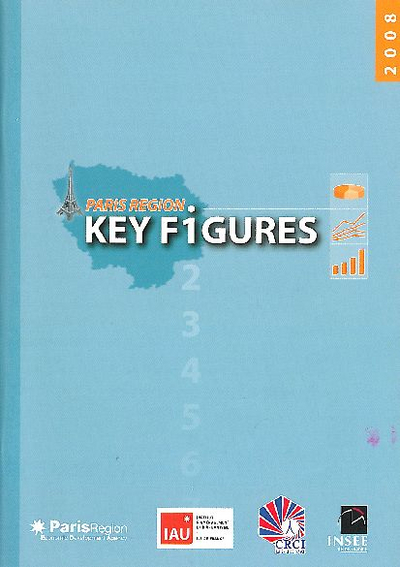Paris Region: Key Figures 2008
The IAU île-de-France, the CRCI Paris - Île-de-France and the INSEE carried out the edition of the document which presents, with tables, maps and graphs, the main economic and social characteristics of the Paris/Île-de-France region.
The Paris/Île-de-France region is France’s foremost economic region, and also one of the leading economic regions in the world with a GDP approaching that of the Netherlands, Poland or the State of Texas. In 2006, its GDP per inhabitant was €43 370 and accounted for more than 28% of national wealth or 4.5% of that of the European Union.
Administratively, the Paris/Île-de-France region is one of 22 regions in France and is made up of 8 "départements" (counties) and 1,281 "communes" (municipalities), including the cities of Paris and Versailles and the business district of la Défense. It has 11.5 million inhabitants, or 19% of the population of France.
Another feature of the region is that its population is younger than the national and European averages.
The Paris/Île-de-France region’s economic success rests on its concentration of transport facilities which provide businesses with quick easy access to a European market of 495 million consumers. Its rail network, Europe’s fastest thanks to the famous TGV, gives it direct access to Brussels, London, Geneva, Lausanne, Cologne, Turin and Milan among others. The international airports of Paris - Charles-de-Gaulle to the North and Paris-Orly to the South complement this accessibility and place the region as the second airport hub in Europe. The presence of the Seine and a number of other rivers also makes it possible to transport goods by waterway into the heart of the conurbation. With 70 ports, the region ranks as Europe’s second river transport platform. Full integration into the eurozone and the Schengen treaty area provides for easy mobility of goods, capital and people.
Internal transport, always difficult in the world’s major conurbations, is facilitated here by the presence of numerous transport infrastructures (210 km of metro, 1,400 km of RER (Regional Express Railway) and railways, 3,000 km of bus routes, 2,100 km of trunk roads and motorways).
The Paris/Île-de-France region has an international reputation for tourism and luxury goods, but the key figures presented here give a much deeper insight into the region’s economic and technological resources.
This study is linked to the following theme :
Economy
